

As the winters set in, in the northern hemisphere things start to get a little difficult for the seafarer as the ship moves towards sub-zero temperature, making cold weather precautions for ships extremely important.
Right from the Captain and Chief Engineer to the OS and Motorman, situations become more challenging than in the tropical weather. However, since a vessel can be expected to go anywhere across the globe, it is imperative that entire on board staff is familiar with the precautions to be taken as the vessel approaches cold weather or freezing temperatures.
These extreme temperatures will depend upon the region rather than the month of the year, hence the ship is expected to have sufficient stock of certain stores so that emergency stocks are not requested from the shore office in areas where they may not be available.


Following are some cold weather precautions for ships (all types of ships) and then some specifically for tankers since I am familiar with the latter.
1 . Start By Draining The Fresh Water Lines On Deck: After final use, few days before entering low temperature area ensure that ALL the Fresh Water lines from Wheelhouse down to the upper deck are drained and the root valve inside accommodation is shut. Include the line on the monkey Island as well as it is often forgotten. Leave the hydrant valves in open position.
2. Drain The Fire Line: Just like the FW line, drain the Fire Line on deck as well and leave the after most hydrant open so that entire water of the line is drained.
3. Check Anchor Wash Valves: Recheck that Anchor wash valves are open as well.
4. Check Deck Machinery: Carry out a final check of the Deck Machinery, topping up levels in the gear case of winches and windlass. Top up the Hydraulic Oil tank for Forward and Aft machinery. When the temperatures and weather is extremely low it is likely that personnel incharge of the mooring operations will forget to make basic checks.
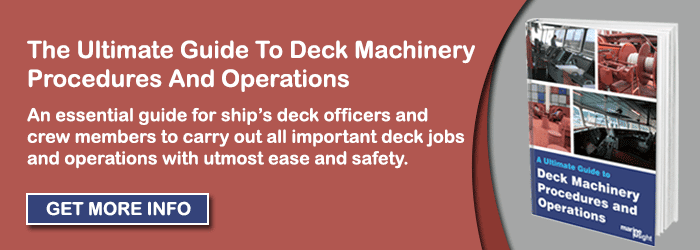

5. Monitor Glands: In case the deck machinery is steam driven, you will do well to nip up all the glands and repack if some were leaking in normal condition. You may also use the opportunity to change any leaky gaskets, as in low temperatures it will only get worse.
6. Do Greasing and Lubrication: Carry out a greasing and lubrication routine of open gears and wires if found dry.
7. Keep Oil Warm: Before the deck machinery is to be actually used, start the Hydraulic Pumps in the Bosun Store and Steering Gear Room at least 1 hour in advance and allow at least one winch to run idling at slow speed. This will keep the oil warm by circulating.
8. Follow Correct Procedure For FRAMO system: In case you have a FRAMO system for Cargo as well as deck machinery and Bow thrusters, you need to follow the correct procedure for recirculation and pre warming the oil.
9. Try Out Cranes: Try out cranes to see that all the pulleys are moving in sheaves and will not give you’re a surprise when required.
10. Try Out Overboard and Sea Suction Valves: In the engine Room try out all the overboard and sea suction valves for proper operation.
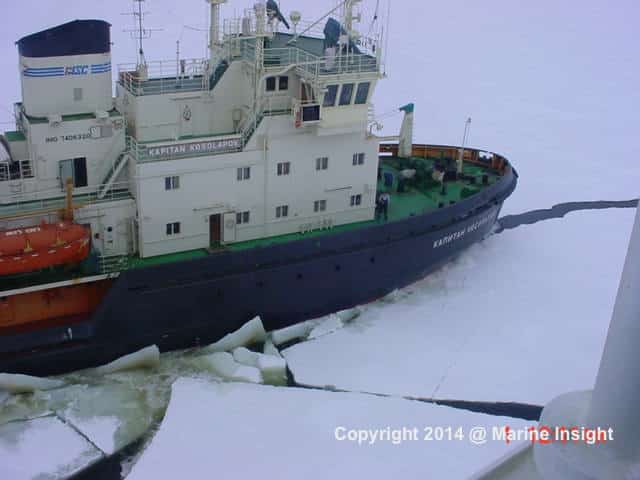

11. Try out the Steam Blow off valves: Try out the Steam Blow off valves fitted on the sea chest and keep the steam pipe meant for the purpose near the sea chest. This valve is used very rarely and that too in very low temperatures when the sea is actually frozen.
12.Check the Steam Coils: Check the Steam Coils for Accommodation Air conditioning and drain the lines few days in advance. Due to not using, sometimes offensive gases are entrapped in the line from the boiler to the evaporation unit. Check that the air damper for fresh air is free and can be moved when required.
13. Try out the Lifeboats: Try out the Lifeboats to see that sheaves are in proper operation and the gear is operating to satisfaction.
14. Check the coolant of the Lifeboat engine: Check the coolant of the Lifeboat engine to see that it has sufficient concentration of anti freeze, much below the temperature that you expect to encounter. Try out the lifeboat engine and check the fuel tank level. Regularly check to see the charging condition of Life Boat Engine starting batteries.
15. Check Emergency Generator and Engine: In the same way as for LB Engine; carry out a comprehensive check of the Emergency Generator and Engine. Coolant, Fuel Level, Starting devices (both main and second start device).
16. Check Pre Warming heater for M/E Jacket Cooling water: Engineers may also use this opportunity to see that the Pre Warming heater for M/E Jacket Cooling water is functioning well, as this will be the most important piece in port of if running on Super slow speed in low temperature condition. Similar to as suggested on deck you may check all leaky steam gaskets and valve glands and repair them before valves are actually in use.


17. Order Sufficient Winter Protective Accessories: Order sufficient Woolen Parkas, gloves, innerwear etc. to avoid issues related to hypothermia. It is always better to order median sizes. It is a good practice to have them checked before use for proper condition, working of zips etc.
TANKER PRACTICE FOR COLD WEATHER:
In addition to the above general cold weather precautions for ships , a tanker vessel requires some extra precautions as it has some very specialised equipment fitted:
1 PV Breaker: It’s a very important equipment for a tanker. Check the liquid inside for temperature tolerance of at least -15*c or more if going to more extreme region. Add additional anti-freeze if required and record it in the Deck Maintenance log if one is maintained as per your SMS.
2. Deck Seal: Is normally fitted with a heating coil. Mostly it has only one coil for steam entry and exit, so don’t get alarmed. Carry out an inspection of the Deck Seal and the heating coil if not done earlier. Open steam to see that none of the weld- joints or gaskets or valve glands and flange gaskets are not leaking.
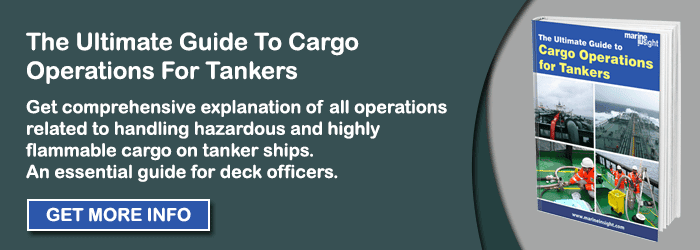

3. Heating Coils: If yours is a product tanker you will have a lot of heating coils for the cargo tanks. You may have pressure tested these if you are planning to carry heated cargo. Ensure that each and every coil is COMPLETELY empty of water. As a thumb rule keep the Main Deck In/OUT valve and main steam inlet valve to the tank and return condensate valve shut; apart from this keep ALL the tank valves, including the drain valves OPEN. Please stick to this very seriously to avoid a catastrophe in case you wake up one fine morning to snow on deck.
4. ODME sampling pump and pipeline: We assume that you have already shut the fresh water supply from the Engine Room to the Pump Room. Now take additional precautions and drain the sampling pump casing by opening the drain plug . Drain the connected FW and sample lines too.
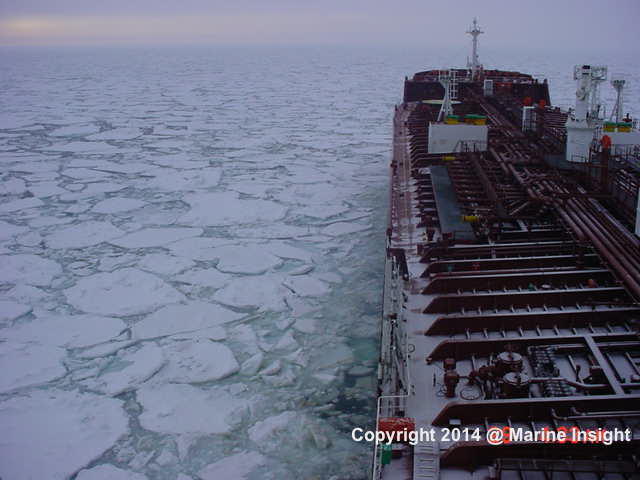

5. Cargo Stripping Pump: It is possible that last time this was used, someone may not have emptied the steam side and the steam lines. Do that now, by first ensuring that Steam supply from E/R is shut.
6. Tank Cleaning Heater: Though not much at risk due to proximity with the E/R bulkhead.It still might be a wise thing to drain the steam lines and also lower the Sea Water side to a controlled extent.
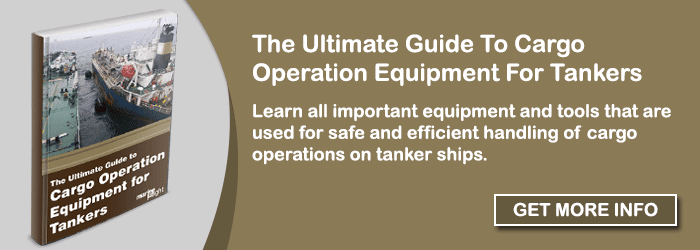

7. IG Line Pressure Sampling Line: Shipyards are fond of fitting a 8-10mm line from the IG line to the pressure switch and indicator. This sometimes gets choked if there is condensate in the line. Please open the line from both ends and blow through to ensure clear. PRECAUTION: Do not blow INTO the pressure switch.
8. Record Cargo Temperature: Regularly if you are carrying heated cargo. It can be done twice from Cargo Control Console if the temperature indicator is reliable. Cold weather if associated with sprays on deck or rough weather brings down the cargo temperature must faster.
Do you know about any other important cold weather precautions for ship?
Let’s know in the comments below.
Disclaimer: The authors’ views expressed in this article do not necessarily reflect the views of The Marine Learners. Data and charts, if used, in the article have been sourced from available information and have not been authenticated by any statutory authority. The author and The Marine Learners do not claim it to be accurate nor accept any responsibility for the same. The views constitute only the opinions and do not constitute any guidelines or recommendation on any course of action to be followed by the reader.
The article or images cannot be reproduced, copied, shared or used in any form without the permission of the author and The Marine Learners.










We believe that knowledge is power, and we’re committed to empowering our readers with the information and resources they need to succeed in the merchant navy industry.
Whether you’re looking for advice on career planning, news and analysis, or just want to connect with other aspiring merchant navy applicants, The Marine Learners is the place to be.